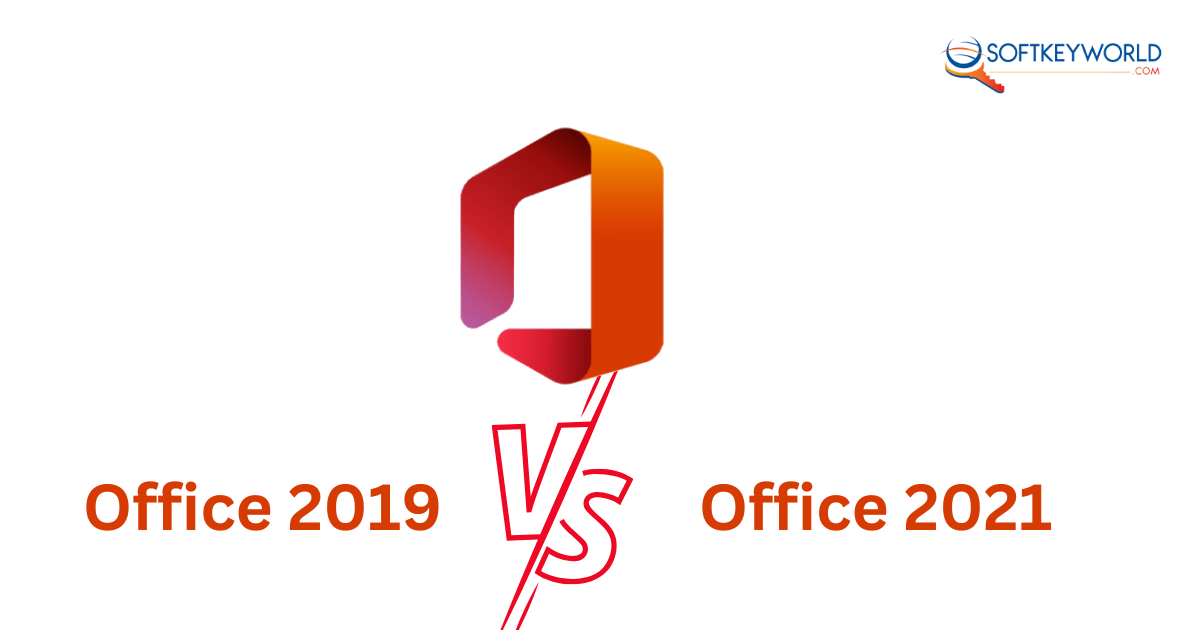Microsoft Office has been a renowned name in the productivity software world for decades. With each new version, Microsoft adds new features to improve user experience and productivity. Among these, the recently released two versions, Office 2019 and Office 2021, have caught people’s attention. Office 2019, launched in late 2018, is a classic and feature-rich suite with essential applications. On the contrary, Microsoft Office 2021, introduced in 2021, represents a modern version of the Microsoft Office productivity suite. In this article, we’ll compare these two versions to help you decide which is better. Let’s dive into that;
Compatibility of Microsoft Office 2021 and Office 2019
Microsoft Office 2021 and Office 2019 are compatible with their respective operating systems. Office 2021 requires a more modern OS like Windows 10 or macOS Sierra, whereas Office 2019 is compatible with earlier versions of Windows and macOS. To fully understand the compatibility of Office 2019 and Office 2021, it’s essential to be aware of their specific system requirements, as each version has distinct demands regarding the operating system and hardware configuration.
System Requirements for Microsoft Office 2021
Computer and Processor
Windows OS: 1.6 GHz or faster, 2-core processor.
macOS: Intel Processor.
Operating Systems
Windows OS: Windows 11 or Windows 10 for PC
macOS: macOS Sierra (10.12) or later
Memory
Windows OS: 4 GB RAM (64-bit), 2 GB RAM (32-bit).
macOS: 4 GB RAM.
Hard Disk Space
Windows OS: 4 GB of available disk space.
macOS: 10 GB of available disk space
Display
Windows OS: 1024 x 768 resolution for PC
macOS: 1280 x 800 screen resolution.
Graphics
Windows OS: DirectX 10 graphics card for graphics hardware acceleration for PC
macOS: No graphics requirements.
Browser
The current version of Microsoft Edge, Internet Explorer, Safari, Chrome, or Firefox.
.NET Version
Windows OS: Some features may require .NET 3.5 or 4.6 or higher to be installed.
Other Requirements
Internet functionality requires an internet connection, especially while utilizing cloud functionalities.
System Requirements for Microsoft Office 2019
Computer and Processor
Windows OS: 1.6 GHz or faster, 2-core.
macOS: Intel processor.
Operating System
Windows OS: Windows 11, Windows 10, Windows 10 LTSC 2021, Windows 10 LTSC 2019, Windows Server 2022, or Windows Server 2019.
macOS: Office for Mac is supported on the three most recent versions.
Memory
Windows OS: 4 GB RAM (64-bit), 2 GB RAM (32-bit).
macOS: 4 GB RAM.
Hard Disk
Windows OS: A minimum of 4 GB of available disk space.
macOS: A minimum of 10 GB of available disk space; HFS+ hard disk format (also known as macOS Extended) or APFS.
Display
Windows OS: 1280 x 768 screen resolution (32-bit requires hardware acceleration for 4K and higher)
macOS: 1280 x 800 screen resolution.
Graphics
Windows OS: Graphics hardware acceleration requires DirectX 9 or later, with WDDM 2.0 or higher for Windows 10 (or WDDM 1.3 or higher for Windows 10 Fall Creators Update).
macOS: No graphics requirements.
Browser
The current version of Microsoft Edge, Safari, Chrome, or Firefox.
.NET Version
Windows OS: Some features may require .NET 3.5 or 4.6 or higher to be installed.
Additional Requirements
Internet functionality requires an internet connection, especially while utilizing cloud functionalities.
Pros and cons of Microsoft Office 2021 and Office 2019
Each model, Office 2021 and Office 2019, has its own advantages and disadvantages. To gain insight into these aspects, let’s explore the pros and cons of each version:
Pros of Microsoft 2021 Office 2021
- Offers the most recent and cutting-edge tools and functionalities.
- Provides a more modern and user-friendly experience.
- Regular updates ensure bug fixes and security enhancements.
- Enhanced collaboration features for seamless teamwork.
- Better integration with cloud services for easy file access and sharing.
- Stronger security measures to protect sensitive data.
Cons of Microsoft Office 2021
- Typically comes at a higher price point compared to older versions.
- It may require more powerful hardware to run optimally.
- New features may take some time to familiarize with.
- Documents created in Office 2021 may not be fully compatible with older versions.
Pros of Office 2019
- Often more affordable for users on a budget.
- Stable and Reliable applications
- Familiar interface to previous Office versions
- Adequate for essential personal and business tasks.
- Works well without the need for continuous internet connectivity.
Cons of Office 2019
- Lacks some of the latest tools and advancements found in Office 2021.
- Won’t receive regular feature updates beyond the initial release.
- Collaboration features may not be as robust as in Office 2021
Comparison of Features Between Microsoft Office 2021 and Office 2019
| Features | Microsoft Office 2019 | Microsoft Office 2021 |
| Cost | Generally, more cost-effective | It may come at a higher price point |
| User Interface | Familiar interface with minimal changes | Improved and modern user interface |
| Applications | You may get access to Word, Excel, PowerPoint, Outlook, OneDrive, Access, Publisher, Skype for Business, and OneNote. | All the applications are available in Office 2019. Also, In the 2021 version, Microsoft Office reestablishes the OneNote application and incorporates the widely-used, popular messaging app – MS Teams. |
| Updates | Not applicable. | Frequent updates with new features |
| Security Enhancements and Collaboration | Standard security measures and basic collaboration features | Stronger security measures to protect data and enhanced real-time collaboration and file sharing with MS Teams |
| Advanced Feature for Phones and Tablets | Yes, this subscribed-based service has advanced features for different devices, including phones and tablets. | You can install the mobile applications for free with basic features on tablets and phones under 10.1 inches. |
| New elements | AI insights, Dynamic Arrays, visual refresh, and more | Not Available |
Which is Better: Office 2021 or Office 2019?
Office 2021 and Office 2019 are both powerful productivity suites from Microsoft. However, there are some key differences between the two versions. Office 2021 undoubtedly boasts more advanced features, an improved user interface, and frequent updates. It is an excellent choice for professionals who work in dynamic industries and large businesses who prioritize having the latest tools and innovations.
On the other hand, Office 2019 may be more suitable for certain users, especially those seeking a more cost-effective option. If you require basic productivity tools without the necessity for constant updates and additional features, Office 2019 can serve your needs well. It’s an attractive choice for individual users, students, or small businesses on a budget to avail of reliable and stable applications for personal and essential business tasks.
So, which version is better? Ultimately, the choice between Office 2021 and Office 2019 largely depends on your requirements, financial considerations, and willingness to adopt the latest features. If you value cutting-edge tools, are willing to invest in the latest software, or want to collaborate with others in real time, Office 2021 could be the ideal choice. Conversely, if you prefer a more budget-friendly option or a one-time purchase of the everlasting license, Office 2019 may be the more cost-effective and reasonable solution for your needs.
Conclusion
Office 2021 is preferred for those seeking a more advanced and up-to-date office suite. It caters to professionals and businesses, offering the latest tools and innovations for enhanced productivity. On the other hand, Office 2019 remains a cost-effective option for users with basic productivity needs, offering stable and reliable applications. Ultimately, choose the version that best aligns with your needs to optimize your work and productivity in the digital era. We hope this guide has helped you choose your required one!




